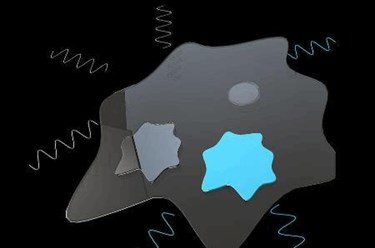Photonic Doping Makes Metamaterials Fabrication Easier
By Jof Enriquez,
Follow me on Twitter @jofenriq

University of Pennsylvania engineers have developed a new technique called photonic doping to design and more easily fabricate electromagnetic metamaterials.
Fabricating metamaterials has proven challenging due to the complex arrangement of multiple constituent parts, called inclusions, necessary for resulting devices to exhibit ideal electromagnetic and optical properties. Rather than make these complicated structures, Penn scientists devised a new way to achieve those unique properties using only a single inclusion, which paves the way for easier fabrication of metamaterials.
In their experiment, a single dielectric rod is placed in a two-dimensional epsilon-near-zero (ENZ) medium with an effective permittivity close to zero, a characteristic of the material’s electric response, and on which an electromagnetic wave is distributed uniformly throughout the material.
They then copied existing electronic doping methods and developed a new technique called photonic doping.
“Just as in electronic doping, adding a set of foreign atoms in an otherwise pure material can significantly alter the electronic and optical properties of the host,” said Nader Engheta, H. Nedwill Ramsey Professor of Electrical and Systems Engineering, who led the study. “‘Photonic doping’ means adding a foreign photonic object in a specialized photonic host structure can change the optical scattering of the original structure in a major way.”
This technique allows engineers to control or reconfigure optical systems and communication devices, without the need to fabricate multiple inclusions into the metamaterial.
“When we’re working with a wave, this photonic doping can be a new way for us to determine the path this wave takes from A to B within a device,” Engheta said in a news release. “With a relatively small change in the dielectric rod, we can make waves ‘go this way’ and ‘don’t go that way.’ That we only need to make a change to the rod, which is a tiny part of the host material, should help with the speed of the device, and, because the effect is the same for the ENZ host with arbitrary shape while keeping its cross-sectional area fixed, this property may be very useful for flexible photonics.”
Penn's experiments showed that the location of the dielectric rod and the shape of the ENZ material did not affect the properties of the resulting metamaterial. Interestingly, adding multiple rods with different diameters, or placing them at different locations within the material, can make the device exhibit other interesting properties that can be suitable for myriad purposes, according to the researchers.
The study was published in the journal Science, and was supported by the Vannevar Bush Faculty Fellow Award through the Office of Naval Research, the Air Force Office of Scientific Research, through Multidisciplinary University Research Initiative awards, and the National Natural Science Foundation of China.
